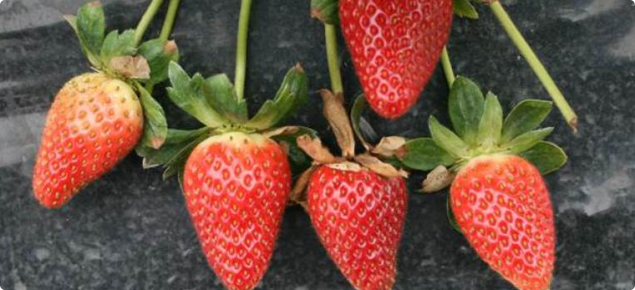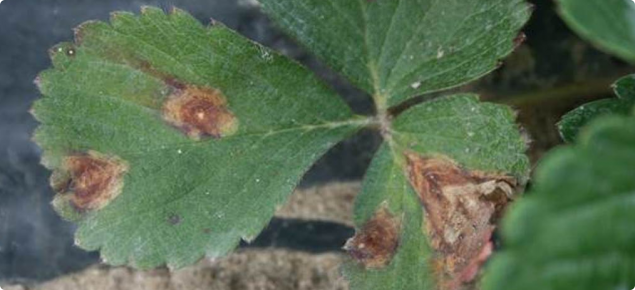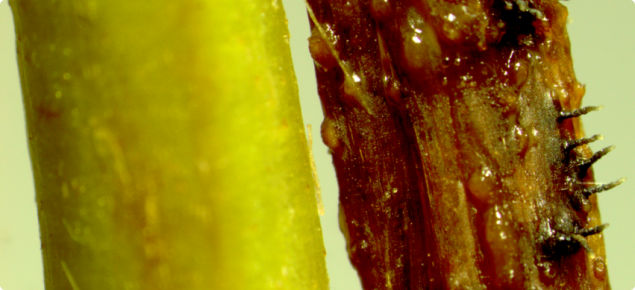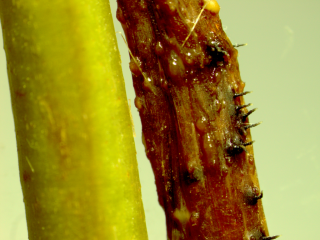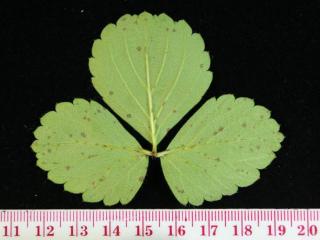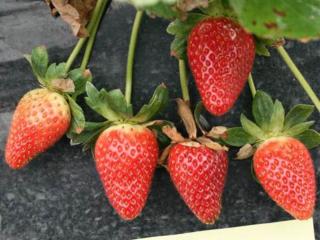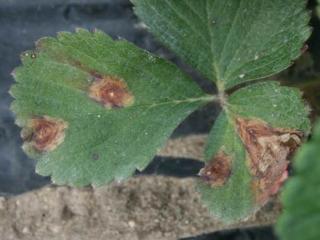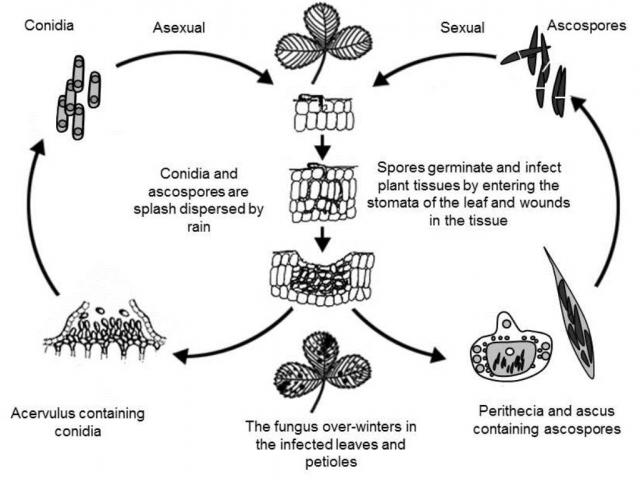Causal organism
Gnomoniopsis fructicola (previously known as Gnomonia) is a fungus which has also been called Gnomonia comari.
Symptoms
Plants become infected between flowering and harvest. Figure 1 shows how the fruiting bodies of the fungus develop on trash. These produce the spores that infect the next crop.
Figure 2 shows very early symptoms of the disease on leaves. It is important to start controlling the disease at this stage. The fungus first infects the calyx (see Figure 3), and disease spreads into the fruit as a rot.
Both green and ripe fruit may be infected. Infected fruit ripens early and turns pale red to brown. It remains firm, but is often invaded by other rots such as grey mould.
Occurrence and sources of infection
Gnomoniopsis is found in most strawberry varieties and is more serious than leaf blotch (shown in Figure 4). Festival is more susceptible than Camarosa.
Trash from previous and current strawberry crops left in the soil is the source of infection. Planting material can carry the spores systemically but levels are usually quite low and it is unlikely that runners are a significant source of infection.
Spread
Fungus spreads by splashing water from rain or overhead irrigation in humid weather.
Favoured conditions
Gnomoniopsis is a weak pathogen and infects the plant through stomata or wounds. It is difficult to control, and is favoured by cool, wet weather. The pathogen reproduces at temperatures over 5ºC and grows best above 20ºC.
Life cycle of the fungus
Control
Do not rely on fungicides for control of this disease. Control starts prior to planting with crop hygiene.
Remove all residues of previous crops from the soil. Thoroughly compost all old plant material once removed or bury deeply on- or off-site. Remove and dispose of any leaves showing signs of early infection.
Apply a fungicide such as Octave® early in the season and keep leaves as dry as possible through the use of cloches. Avoid overhead irrigation.
Octave® may be used prior to flowering only and Switch® has a minor use permit for this disease. Only three sprays of Switch may be applied in one season.
Under favourable conditions for disease (cool with frequent showers), chemicals can be ineffective. Disease can often be more prevalent on the outer rows of the bed where drips may fall on the plants as the sides of the cloche are being raised and lowered for picking access.
Acknowledgement
Thanks to Scott Mattner (DPI Victoria) for use of photos and editorial assistance.

